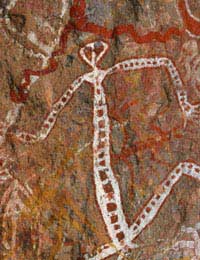
Rock Art is a general term for all forms of humanly fashioned marks on lithic surfaces. The term is a general category that includes at least two distinctive types of art known as petroglyphs and pictographs.
Petroglyphs verses Pictographs
Petroglyphs
This type of rock art is the formation of images usually found from the Neolithic period, by people who incised or carved the rock surface. Often, these images were important forms of pre-symbol writing and were used in the earliest forms of communication and signage.
The two Greek words ‘petros’ and ‘glyphein’ which respectively mean ‘rock’ and ‘carve’ were first combined into the French language to form the single word petroglyphe.
Pictographs
A pictograph, or sometimes called a pictogramme, is an image that represents an object, activity, concept, event or a place or person by use of illustration. In contrast to petroglyphs, pictographs are a true form of symbolic writing where ideas are communicated through the drawing. Pictographs form the basis of the more famous hieroglyphs and the expansively used wedge-shaped cuneiform writing.
Many pictorial road signs, such as an image of a worker with a spade or a profile silhouette of children walking, are modern types of pictographs. In such instances they transmit a specific and essential message: Road works and workers ahead and children crossing or likely to be in the area such as a school.
Although most contemporary cultures use pictographs only for simple symbols some non-literate societies in South America, Africa, and Australasia still use them as their main medium of written communication.
The Chinese who developed pictographs into a logographic writing system around 2000 BC used pictographs as early as 5000 BC.
The Earliest Rock Art
The oldest rock art objects are petroglyphs that have been ascribed to the Neolithic or late Upper Paleolithic boundary. They are found in the rock shelters of Bhimbetka, India and as far south as Australia’s Aboriginal Mimi Art of the Western Arnhem Land.
Rock art pre-dates the Great Egyptian pyramids and was an adaptation of new environments, altered capacities for thinking in the abstract, and a desire to cross-communicate in an expanded social and economic complexity.
Rock art provides us with descriptive information about ancient social actions, the material culture, its economy, religion and political structures, and environment and its changes, including major natural disasters.
However, although the information is present on the rock surface, interpretation of its meaning is a difficult task. One main problem with interpreting the drawings or carvings is identification of the subjects. Many images are highly stylised and are often distorted from reality, not because of any lack of artistic ability by the artist, but more often due to religious perceptions or socially diffused ideologies.
Therefore, it is not uncommon for the modern analyst to misread the symbols and bring an interpretation from a 3M perspective perhaps observing that many little stick figures appear to be running away from the big human when actually, the ancient artist intended to show that seven spirits left the great chief when he died.
World-wide Resemblance
Rock art does not appear to have evolved but rather it seems to have burst, fully developed, into ancient life, simultaneously, according to the resources available to them. One of the astonishing observations made by rock art researchers is the noticeable resemblance of style of petroglyphs across all continents. Is it reasonable to assume that all cultures would be influenced by their surroundings, therefore, commonality is expected in content and subject matter but there is nothing to explain a common style.
Conservative analysts observe that a localized catastrophe with sufficient magnitude to cause a rapid international dispersion of people coupled with a later worldwide cataclysmic event, such as a universal deluge, would reduce global civilizations to a technological infancy but with a common ancestry.
Hand Stencils
Adult hand stencils have been found in caves throughout the world. Blowing or throwing paint or dye over an open hand placed on a rock wall produces the artwork. Many stencils appear with one or more short or incomplete fingers on the hand. This phenomenon was thought to be restricted to only a few caves and was explained as deliberate digit mutilations or amputations, possibly due to disease, or by animal interaction, perhaps while hunting wild animals.
The occurrence of short-fingered stencil art paintings is actually more widely represented than first thought. Experiments have shown that the images were made with the ‘missing’ fingers simply bent over and it now appears that rather than attempting to immortalize an image of a diseased hand, the owner of the print was perhaps using a more universal illustration to signal something yet uninterpreted.
The Living Past in Pictures
Aboriginal rock art depicts their myths and legends, rituals, religion and magic. It involves their dreamtime stories of creation, their beginnings, their beliefs and their lives. The strong desire to describe their reality in art includes the hills, rivers, lakes, mountains, deserts, animals and people: All of the things that we admire in a painting. Rock art provides a living landscape of the past, which is still alive today, and may remain so well into the future.